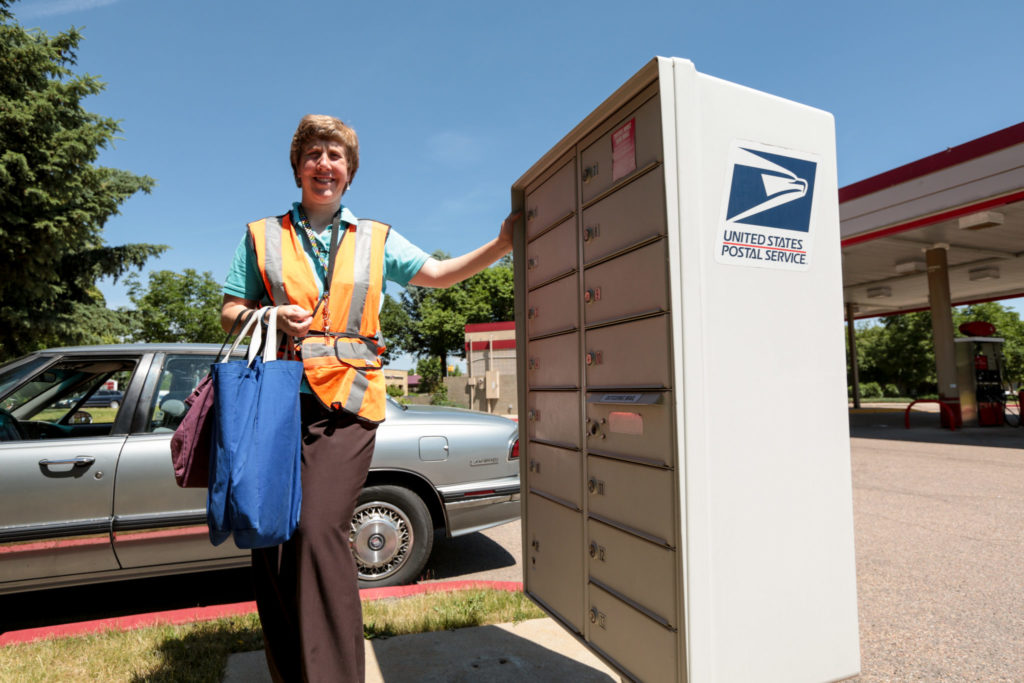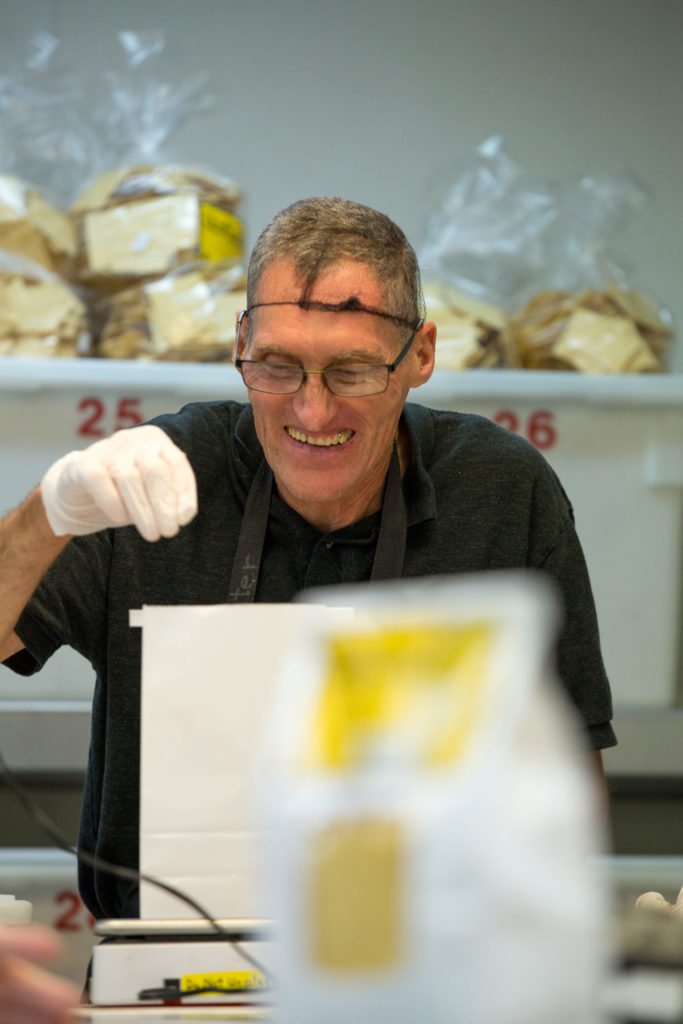So what is Supported Employment anyway?
May 12, 2017
As the alarm goes off in the morning, most of us give it a sideways glance and debate hitting “snooze” one more time before we trudge out of bed and get ourselves going for the work day ahead. This may just be the biggest hurdle we have to get over each day, but for many people we support, there are more hurdles in the way. That’s where Supported Employment comes in.
How does Supported Employment work?
At Foothills Gateway, Supported Employment has 3 basic models. One is our enclave program at Nita Crisp Crackers. In this setting, individuals work at the Nita Crisp facility to package crackers, supported by a supervisor who is a staff person of Foothills.
The second approach to Supported Employment is the cleaning crews. Not only do they spend time keeping our facility shining, but they also contract out their services to homes and a few businesses in town. In addition, there is a crew full time at the Federal Building downtown.
The last model of Supported Employment consists of individual job placements in community jobs. In each setting, individuals work with staff to learn job skills, to hold down a job, and ultimately to experience the fulfillment we are all looking for in our work – the feeling of contributing, the feeling of meaning that comes from a job well done.
Sarah’s Success Story
Sarah, one of the individuals in supported employment, has seen great success in the program. Her story gives us a good example of how it all fits together.
First, it helps to know a little about Sarah’s specific needs and desires in the job setting. Here’s how she breaks it down, “Living with Autism is frustrating and exhausting. My sensory system is all jumbled up; a lot of noises, such as people coughing and babies crying, hurt my ears. It feels like someone has stuck a pencil in my ear!” Based on these factors, it took some time for her to find the right fit, but things came together over time.
Sarah began working at Foothills Gateway in what is now known as Pre-Vocational Services (PreVoc), a program that helps people learn job skills that will transfer to a setting in the community. In PreVoc., Sarah struggled with the noise, the number of people around her and the resulting ‘trigger’ noises. She was not happy (probably a feeling we have all had at one point in a job) and often showed that with her behavior and words. From there, Sarah decided that she would like to try the Cleaning Crew, which did work a little better (less noise and unpredictability), but it still wasn’t quite right.
So, after two years on the Crew, she began working with a job coach. They worked with her to find employment with Eldon James, a local hose fitting manufacturer, where she did quality control tasks such as making sure parts met company standards before shipment.
 This was it! She could wear her headphones to block out the noise, and the job played to her strengths – attention to detail, predictable and consistent processes, quality control. Sarah happily worked there for almost 8 years until the company moved to Denver.
This was it! She could wear her headphones to block out the noise, and the job played to her strengths – attention to detail, predictable and consistent processes, quality control. Sarah happily worked there for almost 8 years until the company moved to Denver.
Then, knowing what they were looking for this time, she and her job coach found a job at Jorgensen Labs in Loveland. Jorgensen was able to meet her needs; and her precise, detail oriented work has been just what they were looking for as well. She sums it up well, “The good thing is I love my job!!”
Sarah’s success story gives a lot of insight into how the program is designed to work, but it doesn’t tell the whole story. For the staff in Supported Employment, following “Person Centered” practices extends in several directions; they work to find a job that fits the individual, but they also have to make sure that the needs of the employer are met. They also juggle the schedules and requests of parents/families, host home providers, transportation providers, all of the other people involved in supporting the individual. And you thought your family’s schedule was crazy!
Job Coaches
Amy Bellinson and Nancy Wiechers, job coaches in Supported Employment, will tell you, “a lot goes into a successful job placement.” First, they identify the right work setting, which may involve working with the employer to make adjustments to a person’s job or work environment. Then, they carefully piece together the logistics of transportation and schedules. But their work is just beginning!
“We often work alongside people to help them master the job itself…We work on other skills as well, like being on time and working hard, but also basics like hygiene and appearance, communication with their supervisor, coaching them through the fact that they still need to go in to work if it’s snowing or they got up a little late…once they have a job, we want to make sure they keep it so all of these things are important.”
If you walk into the Supported Employment office, you’ll often hear roaring laughter as someone details their day. Amy and Nancy agree, “there is no such thing as a typical day. When someone gets back in the afternoon, you can tell where they have been by their sunburn, messy clothes or even their smell. It’s amazing the jobs and skills we get to learn along with people.”
The two shared stories of learning all kinds of jobs – power-washing RV’s, pouring out expired beer (you can imagine the smell after that!), being a male locker room attendant, washing puppies, and Nancy’s favorite, “getting to drive to Estes to the YMCA Camp and get to see all the beautiful Colorado Rocky Mountains!”
The staff in Supported Employment support the people on their caseloads as well as each other, brainstorming jobs, stepping in when someone is worn out from going to a particular job site day after day, or listening to each other’s frustrations. While it is undeniably hard work, it’s cool to watch Amy and Nancy’s faces light up when they talk about successes people have had.
“When you find the right fit, that’s what makes it all worth it.” Who knew that it was so complicated? Then again, isn’t that what makes life interesting?
*The names of individuals in this story have been changed for their protection.*

 Donate
Donate
